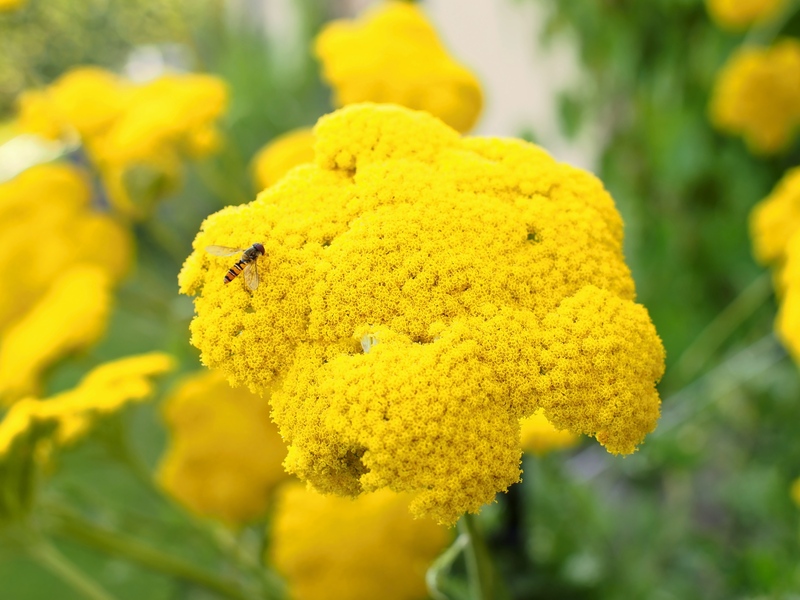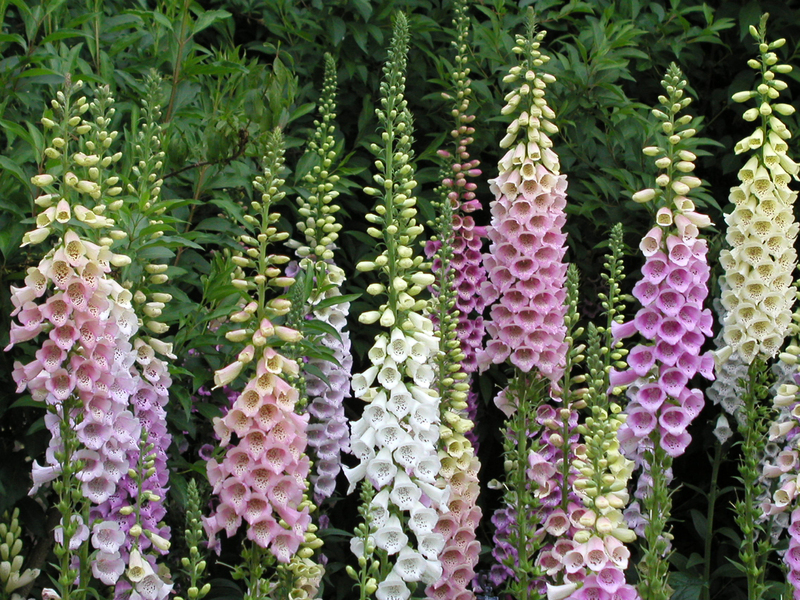Cultivating Joy from the Clutter of Garden Neglect
Posted on 01/07/2025
Cultivating Joy from the Clutter of Garden Neglect
Garden neglect is a familiar term for many homeowners. Our gardens, once vibrant with blooms and lush greenery, often succumb to the demands of modern life: busy schedules, unforeseen circumstances, and simply being overwhelmed. Yet, amid overgrown weeds, tangled vines, and the chaos born from neglect, there lies an unexpected promise--the potential to rediscover joy from the clutter of garden neglect.
This article explores how you can find happiness, creativity, and purpose by embracing imperfections in your outdoor space. We will look at why gardens can fall into neglect, the surprising benefits of garden chaos, practical steps to rekindling your connection with your garden, and how to transform "clutter" into a catalyst for creativity, biodiversity, and authentic joy.

Understanding the Nature of Garden Neglect
Why Gardens Fall into Neglect
- Time constraints: Hectic work schedules and family life can push garden care down the priority list.
- Lack of Gardening Knowledge: Beginners may feel overwhelmed by what seems like a never-ending to-do list.
- Seasonal and Weather Challenges: Unpredictable weather or prolonged absences can quickly result in overgrowth.
- Changing Physical Abilities: Aging or injury might make regular maintenance difficult.
- Other Priorities: Sometimes, life just gets in the way.
The Psychological Impact of Garden Neglect
Often, garden clutter brings feelings of guilt or self-judgment. But what if you could find joy in garden neglect by changing perspective? Studies show that spending time in nature--even imperfect or wild nature--reduces stress and boosts mental health. By reframing neglect as an opportunity rather than a failure, you can release guilt and welcome new possibilities.
The Unexpected Benefits of a Neglected Garden
1. Increased Biodiversity
Untidy gardens act as miniature wildernesses. Native plants, wildflowers, and so-called "weeds" provide habitats for pollinators, birds, and beneficial insects. The patchy overgrowth that may at first seem unsightly can be a source of rich life.
- Wild habitats: Overgrown areas become havens for bees, butterflies, and birds.
- Soil health: Organic debris from neglected gardens breaks down naturally, enriching the earth.
- Biodiverse beauty: Spontaneous plant growth creates unique, ever-changing landscapes.
2. Less Pressure, More Pleasure
Freeing yourself from the expectation of perfection can make gardening far more enjoyable. By embracing the clutter of neglect, you allow space for experimentation and reduce anxiety about constant upkeep.
- Less stress: There is no "wrong" way to re-engage with your garden.
- Opportunity for mindfulness: Observing what has happened in your absence fosters a present-moment awareness.
- Creative freedom: You are no longer constrained by rigid plans or tradition.
3. Inspiration in Imperfection
Sometimes, unplanned beauty arises from neglect. Self-seeded flowers, surprising color combinations, or unexpected wildlife appearances remind us that order is just one form of beauty.
- Discovery: Uncover hidden gems or interesting plant volunteers.
- Resilience: Witness which plants thrive without human intervention.
- Personal growth: Letting go of control can lead to valuable life lessons.
How to Rediscover Joy in Your Neglected Garden
1. Adopt a Mindful Mindset
Reframe the narrative. Your garden is not a measure of your worth--it's a living, evolving entity. Approach it with curiosity rather than criticism. Take a few minutes to simply walk around your garden. Listen to the sounds, observe growth, and notice wildlife. This mindful engagement can help you appreciate your outdoor space, imperfections and all.
2. Celebrate Garden "Clutter" as Creative Potential
Think of neglected areas as blank canvases or works-in-progress. That tangle of vines? It may support butterfly larvae. The exuberant wildflowers? A natural pollinator buffet. Instead of immediately reaching for the pruners, take the time to understand what is flourishing naturally.
- Photograph the unexpected beauty: Capture unique scenes or wildlife as part of a garden journal.
- Learn from resilience: Identify hardy plants that survive without your intervention as candidates for future low-maintenance gardening.
- Use the wildness as a base: Blend "designed" garden spaces with more naturalized patches for interesting contrast.
3. Small Steps, Big Difference
Tackling an overgrown garden can be daunting, so start small:
- Define a manageable area: Choose a single raised bed or corner to focus on.
- Set a gentle schedule: Aim for 10-15 minutes a few times a week, rather than marathon sessions.
- Use "clutter" for mulch and compost: Gather fallen leaves, prunings, and dead plants to create homemade compost or mulch beds.
4. Invite Others to Share the Journey
Gardening need not be a solo endeavor. Ask family, friends, or neighbors to join you for a clean-up day or to simply enjoy the wildness together. Community engagement transforms the burden of garden neglect into an opportunity for connection.
Practical Steps to Heal and Transform Garden Neglect
Step 1: Observe and Inventory
Take time to walk through your garden with a notebook (or your phone's camera). List what's thriving, what's struggling, and where clutter has accumulated. Notice self-seeded plants, interesting wildlife activity, or areas that could be easily improved.
- What are the main sources of clutter? Fallen branches, leaf piles, invasive weeds, abandoned tools?
- Which plants have survived on their own?
- Any surprising flowers or wildlife?
Step 2: Prioritize
- Urgent: Remove any hazardous material (broken glass, sharp debris, diseased plants).
- Beneficial "clutter": Leave healthy fallen leaves, seed heads, or logs for wildlife.
- Personal enjoyment: Focus on making areas you most use (patio, path) safe and inviting first.
Step 3: Cultivate "Good" Clutter
Not all clutter is bad! Consider letting certain wild areas remain as informal wildlife habitats. Convert some leaf piles into compost. Build a bug hotel from branches or stack logs for fungi and beetles.
Step 4: Blend Wild with Tame
Create transitions between cultivated beds and wild corners. Edge paths with wildflowers, allow some grass to grow long, or purposely plant native shrubs where they can "spill" into more formal beds.
Step 5: Savor the Progress
Celebrate every transformation, no matter how small. Share before-and-after photos with friends. Write about your experiences. The simple act of noticing and appreciating change is a source of garden happiness.
Sustainable Gardening: Turning Neglect into Ecological Wins
Rewilding and Pollinator Sanctuary
What some see as neglect, others recognize as "rewilding." Wildflowers, clover, nettles, and brambles provide nectar for bees and shelter for beneficial insects. By leaving certain areas intentionally untidy, you support endangered pollinators and birds.
- Leave seed heads for birds: Goldfinches love thistle and dandelion seeds.
- Allow native plants to spread: Many are drought-resistant and low-maintenance.
- Create brush piles: Small mammals and amphibians use them for cover.
Water and Soil Conservation
Thick plant cover from "neglect" shades soil, prevents erosion, and retains moisture. Fallen leaves break down, feeding worms and improving structure. Instead of seeing a tangled garden as problematic, recognize its part in a healthy ecosystem.
Design Ideas: Embracing the Beauty of Imperfection
Naturalistic Garden Design
- Let go of symmetry: Arrange rocks, paths, and plants in soft, informal clusters.
- Wildflower Meadows: Introduce a mix of native flowering species for a low-care, high-impact display.
- Functional chaos: Zones for composting, bug hotels, or wildlife ponds can double as focal points.
Art from Garden Clutter
- DIY Sculptures: Use branches, seed pods, or pebbles to create garden art.
- Mosaic paths: Inlay broken tiles or stones into well-trodden garden walkways.
- Upcycling: Repurpose found items as planters or garden ornaments.

The Emotional Garden: Finding Peace & Joy
Ultimately, cultivating joy from the clutter of garden neglect is about perspective. Instead of longing for a pristine, magazine-ready plot, relish the quirks and surprises your garden offers you. In each wild patch, buzzing bee, or unruly vine, there is a story of survival and a lesson in acceptance.
- Accept imperfections: Just as in life, perfection in gardening is an illusion.
- Enjoy the process: Each step you take is a step toward reconnection--not just with your garden, but with yourself.
- Share your experience: Inspire others by showing that untidy gardens can be rich in life, beauty, and satisfaction.
Conclusion: Let Your Garden's Clutter be Your Muse
To find joy amidst the clutter of garden neglect, swap judgment for curiosity, and perfectionism for creativity. Take pleasure in the process, not just the outcome. Your neglected garden is not a problem to be solved, but a living, breathing companion on your journey of growth and discovery.
Next time you gaze out at a weedy border or tangled bed, smile. You have a world of possibility right outside your door--and in that clutter, the seeds of joy are waiting to grow.
Ready to transform garden chaos into a source of happiness? Start today--with one small step and an open heart. Your neglected garden is already more beautiful and bountiful than you think.

